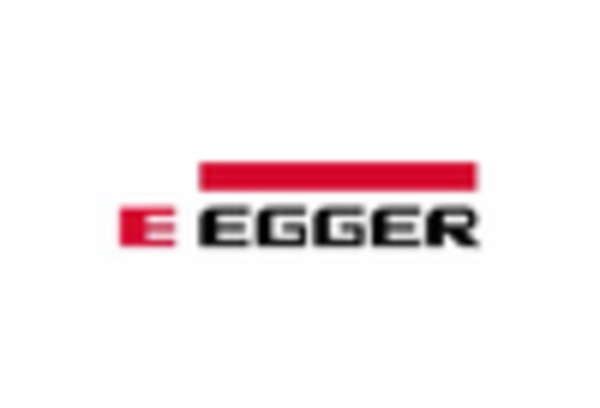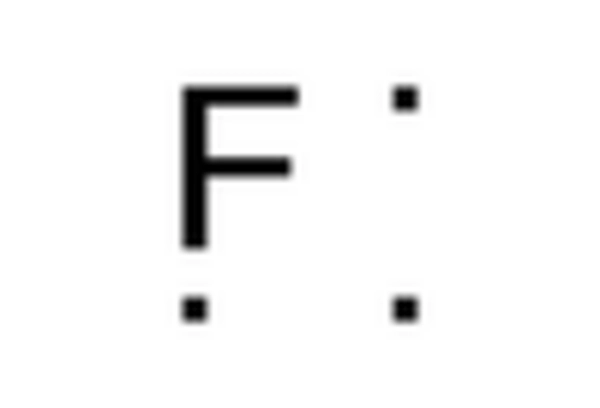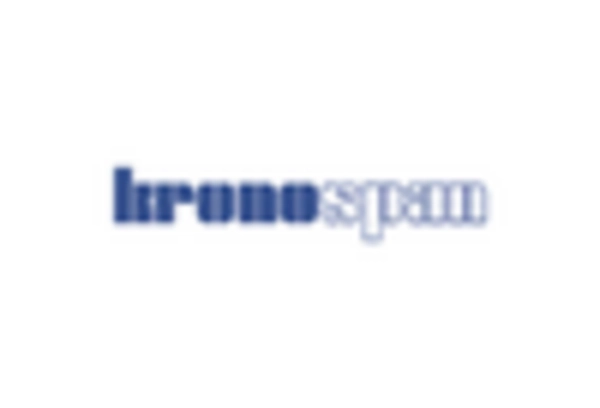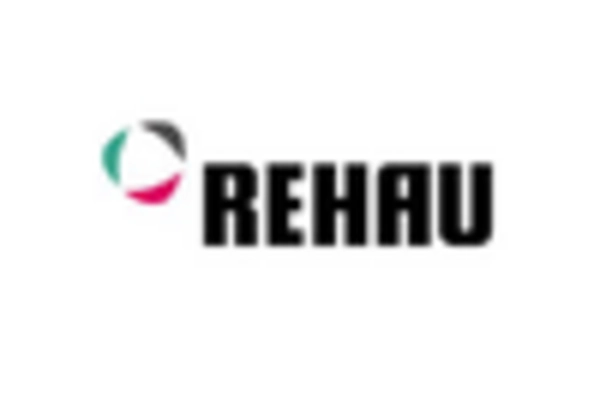The edge banding-materials market is currently characterized by a dynamic competitive landscape, driven by innovation, sustainability, and regional expansion. Key players such as Egger (AT), Kronospan (AT), and Rehau (DE) are actively shaping the market through strategic initiatives. Egger (AT) has positioned itself as a leader in sustainable practices, focusing on eco-friendly materials and production processes. Kronospan (AT) emphasizes innovation in product development, particularly in high-performance edge banding solutions, while Rehau (DE) is enhancing its market presence through strategic partnerships and technological advancements. Collectively, these strategies contribute to a competitive environment that prioritizes quality, sustainability, and technological integration.
In terms of business tactics, companies are increasingly localizing manufacturing to reduce lead times and enhance supply chain efficiency. This approach appears to be a response to the growing demand for customized solutions and rapid delivery. The market structure is moderately fragmented, with several key players exerting influence over specific segments. The collective actions of these companies indicate a trend towards consolidation, as they seek to leverage synergies and enhance their competitive positioning.
In October 2025, Egger (AT) announced the launch of a new line of biodegradable edge banding materials, which underscores its commitment to sustainability. This strategic move not only aligns with global environmental trends but also positions Egger (AT) as a pioneer in eco-friendly solutions within the market. The introduction of these materials is likely to attract environmentally conscious consumers and businesses, thereby expanding Egger's market share.
In September 2025, Kronospan (AT) unveiled a state-of-the-art manufacturing facility in the US, aimed at increasing production capacity and reducing operational costs. This facility is expected to enhance Kronospan's ability to meet the growing demand for high-quality edge banding products. The investment reflects a strategic focus on regional expansion and operational efficiency, which may provide a competitive edge in a rapidly evolving market.
In August 2025, Rehau (DE) entered into a strategic partnership with a leading technology firm to integrate AI-driven solutions into its production processes. This collaboration is anticipated to optimize manufacturing efficiency and improve product quality. By leveraging advanced technologies, Rehau (DE) aims to enhance its competitive positioning and respond more effectively to market demands.
As of November 2025, the edge banding-materials market is witnessing trends such as digitalization, sustainability, and the integration of AI technologies. Strategic alliances are increasingly shaping the competitive landscape, enabling companies to pool resources and expertise. Looking ahead, competitive differentiation is likely to evolve, with a shift from price-based competition to a focus on innovation, technology, and supply chain reliability. Companies that prioritize these aspects may gain a substantial advantage in the market.

















Leave a Comment